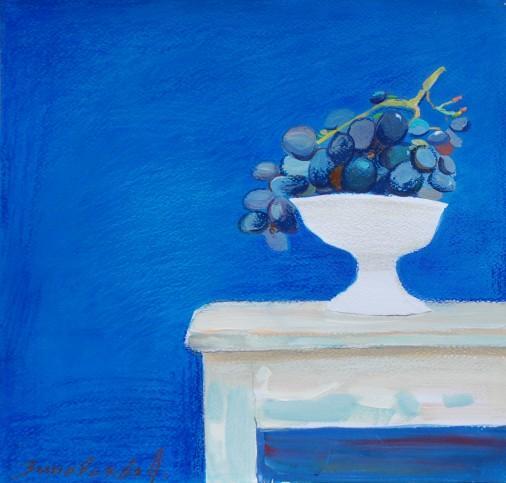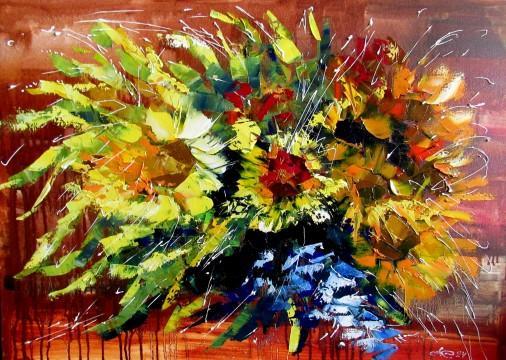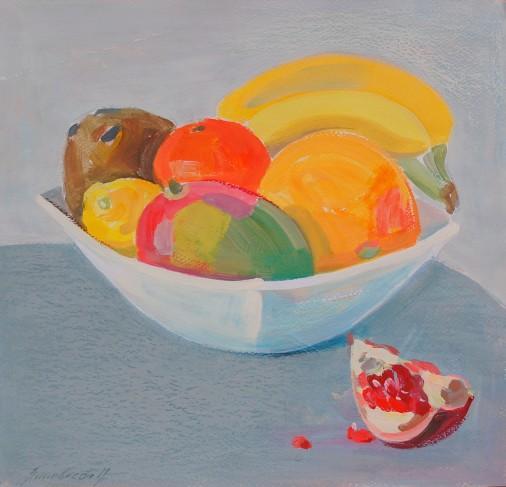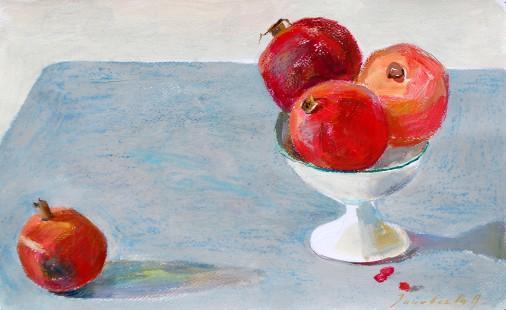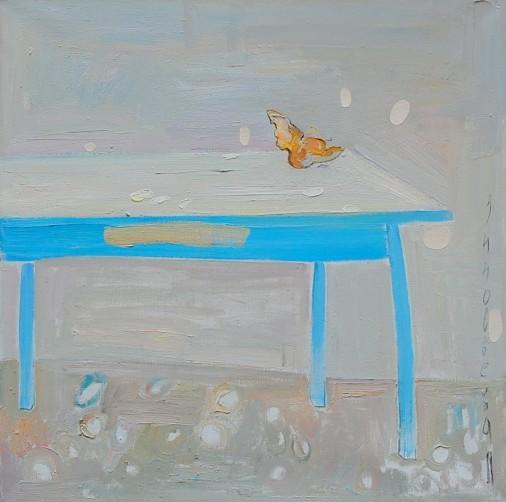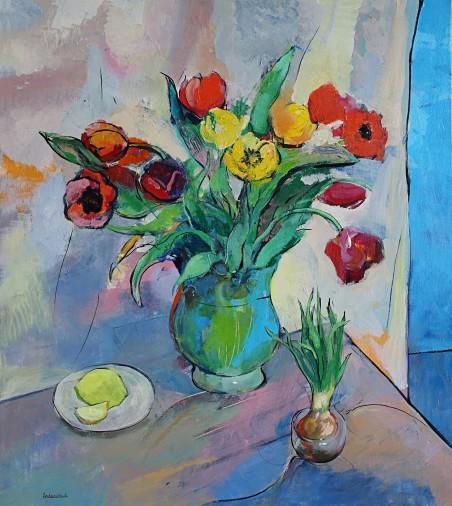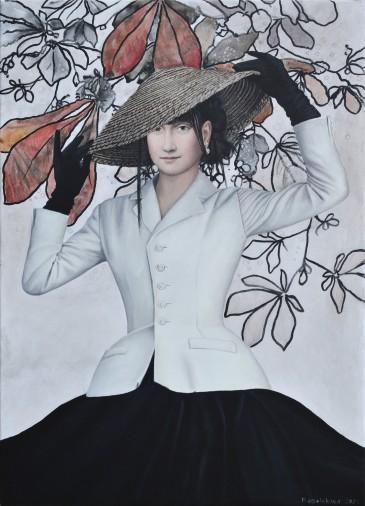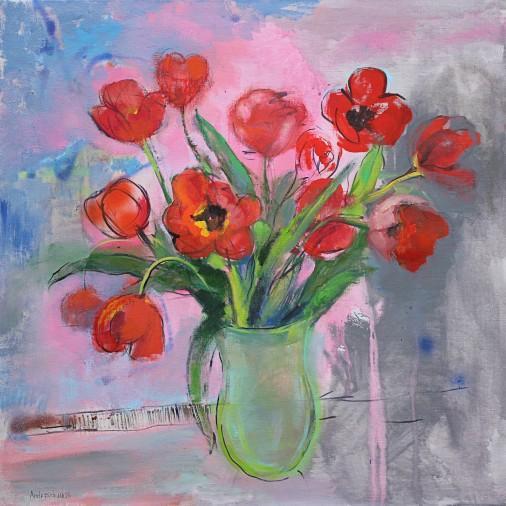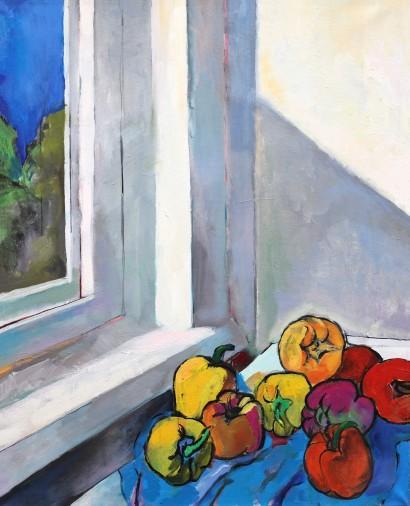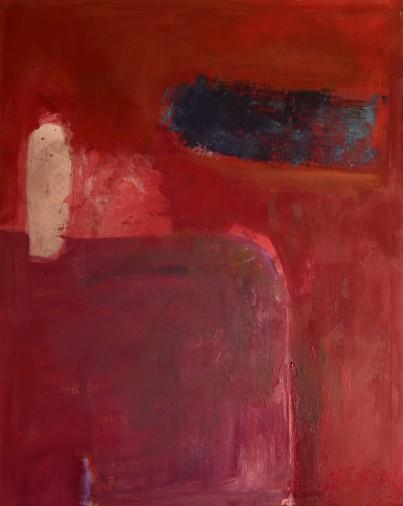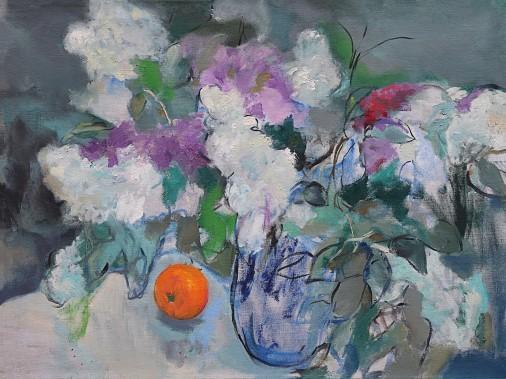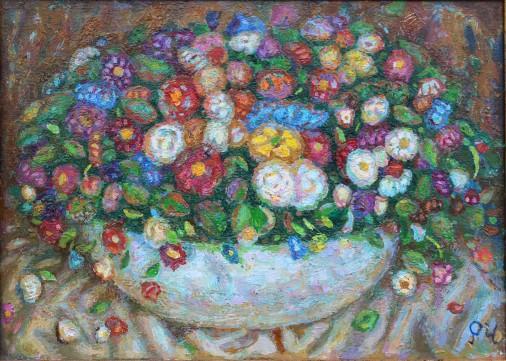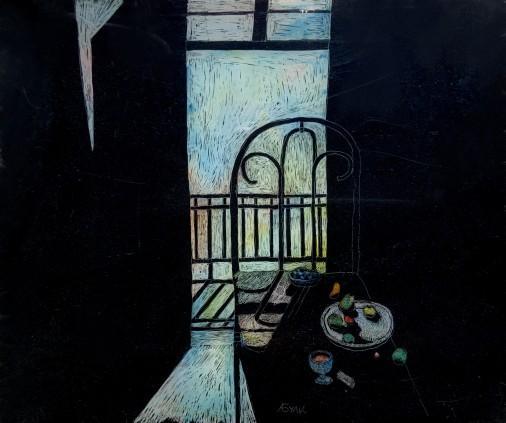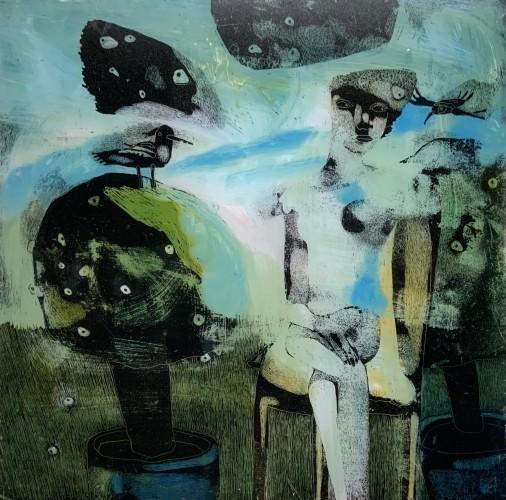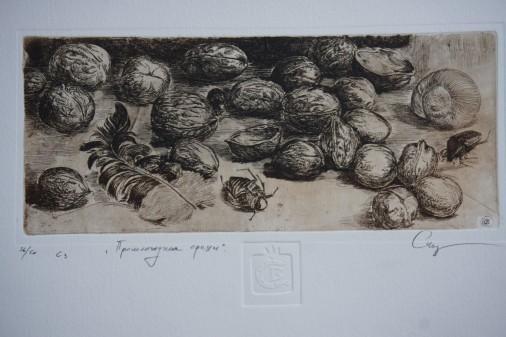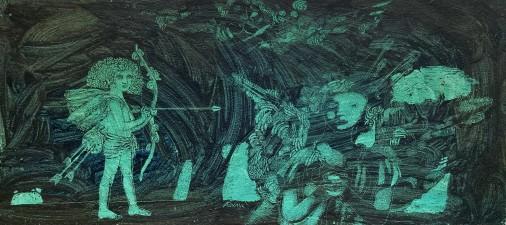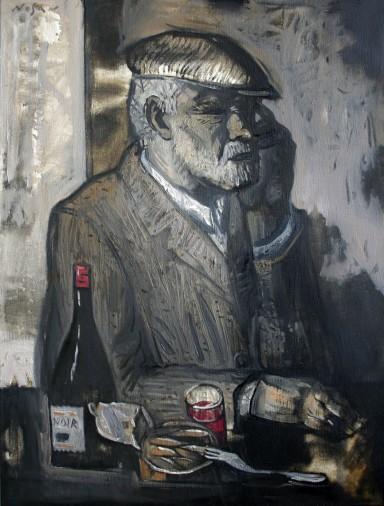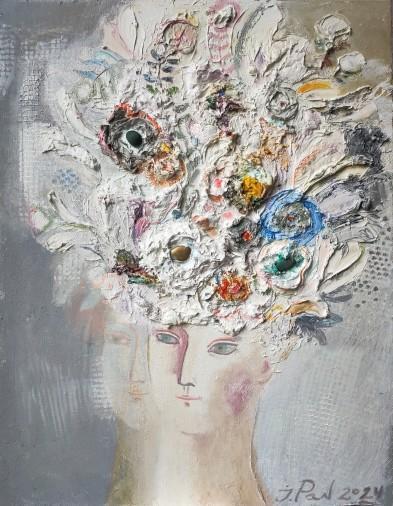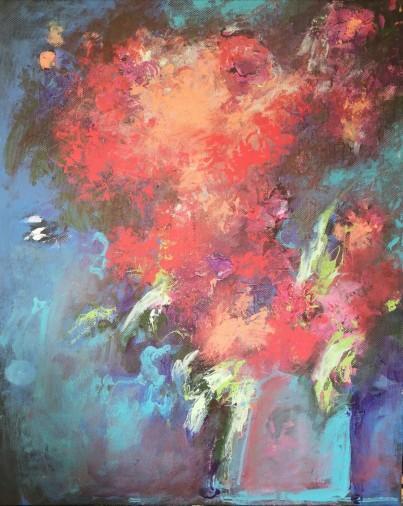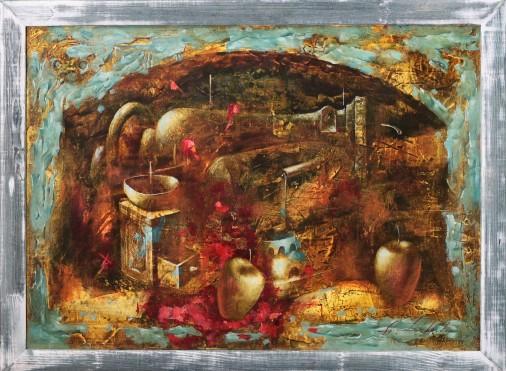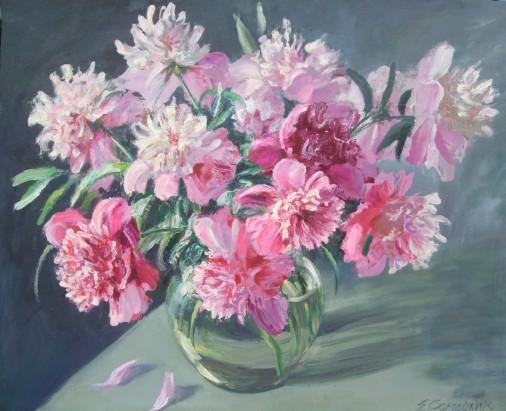Still life paintings
(1040)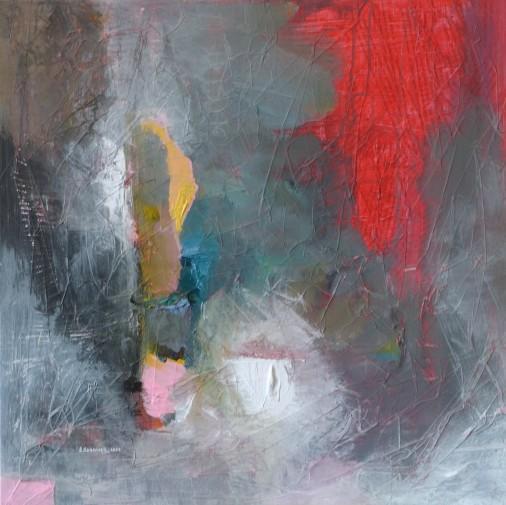
Olga Kopeleva € 160
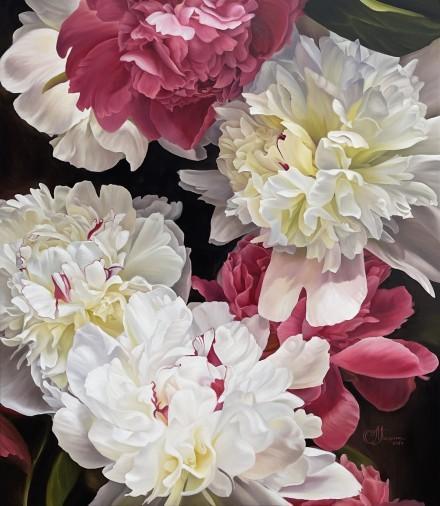
Anastasiia Aliokhina € 2 3022 490
Expand your search
Still life paintings – still nature
Still life painting is a genre when the painter depicts close-up frozen nature, inanimate objects that accompany us in life. The artist can choose living objects of nature outside their usual habitat, for example, game, caught fish, fruits, vegetables, and perhaps such household items as kitchen utensils, cut fabrics, tools. And still life paintings in the kitchen, depicting, for example, fruit in a vase, became part of the interior of ordinary people’s houses.
The still life painting involves the obligatory setting of a kind of stage setting, the organization of the plot of the image. The artist chooses whether he will work only with homogeneous objects, for example, with dishes, or depict dissimilar products — the same dishes with fruits, cloth, can complement the main theme by including birds, animals, insects and, in some cases, man.
The still life painting, which you can buy for your own collection today, will eventually become not only a home decoration, but also, maybe, a good investment. When comparing still life with other genres of painting, a significant role is given to those modest items that fill the life of a person. In this genre, the painter focuses on the volume of the components of painting, its relationship with the surrounding, color palette, reflects all the differences in the texture of the surface of still life elements. The depicted items sometimes they play the role of a symbol, simply decorations or reflect the real objects. In addition, household items demonstrate the social status of the owner, his lifestyle, cause associations. Our gallery has a selection of still life painting and we’ll help you find an artwork you love.
History of still life genre of paintings
Still life stood out as a separate genre during the Renaissance, though still-life plots were used in ancient times and in the Middle Ages. In the seventeenth century, when the Flemish, French, Dutch, and Italian schools of painting received a rapid development, still life had to be lifted. Representatives of these schools had a genuine interest in everyday objects, a penchant for sophisticated things, which was manifested in the drawing of everyday life of people with some sensitivity.
In the XVIII-XIX centuries it is already fully formed, and many well-known artists are writing decorative paintings consisting of household items, vegetables, fruits, flowers. A simple still life of 3 items became a classic.
As other genres of painting develop in Europe, they begin to absorb their stylistic features. For example, in the early nineteenth century, there was a strong influence of romanticism, and by the end of the century - impressionism. They stand out from other Van Gogh paintings Still Life with Pears and Fifteen Sunflowers in Vase, which gained worldwide popularity after the death of the master. The artist also painted a bouquet of flowers on the painting "Vase with red poppies".
Still life often contained a hidden allegory, revealing the theme of the corruptibility of the earth and the inevitability of the end. The new flourishing of the genre was due to the creativity of post-impressionists, who chose the world of things as the main motive of their creativity.
In the XX century. he has flowed styles of abstraction, Dadaism, Cubism, modernism, pop art and other new trends in art. This time is characterized by the representation of geometric figures, experiments with paints, techniques, styles.
Today, the classic version is extremely rare, mainly in academic painting. In recent years, interest in the genre has gained momentum. Watercolor, pastel and oil paintings are in demand. Photorealistic (hyper-realistic) canvases of contemporary Ukrainian artists have become particularly popular.
Types of still life
There is no clear classification, but the following types of still lives are distinguished:
- Vanitas is an allegorical image of the inevitability of death. The human skull is often featured.
- Images of items belonging to a conditional owner. There is no rigid framework. The painted things indirectly characterize their owner.
- Image of inanimate objects as standalone objects. The works have a pronounced decoration.
- In Holland in the early XVII century. a floral still life or still life with flowers. The canvases were often given for holidays, they decorated the interior. Often, artists depicted bouquets of plants that bloom at different times of the year.
- Breakfast on the picture or other meal - a frequent motif in the XVII century. Now food is depicted on canvases much less often.
- Scientific still life is characterized by different attributes of scientists: pointers, boards, books, astronomical and measuring instruments, chemical flasks.
- The hunting plot has the necessary attributes: killed game, guns, knives, equipment of the hunter.
The combination of genres continues today. Often there is a combination of autumn and spring landscapes, creations on the theme of summer, picnics in nature, national still life.
In the paintings of other genres there are still lifes, as part of the canvas. In this case, still life has a specific semantic load, shown with the help of a variety of objects.
Still life is relevant today, moreover, the genre is developing. Our online store KyivGallery has a wonderful collection of still life paintings by modern Ukrainian artists. We help you find a perfect artwork you love for your interior, collection or for a gift.







